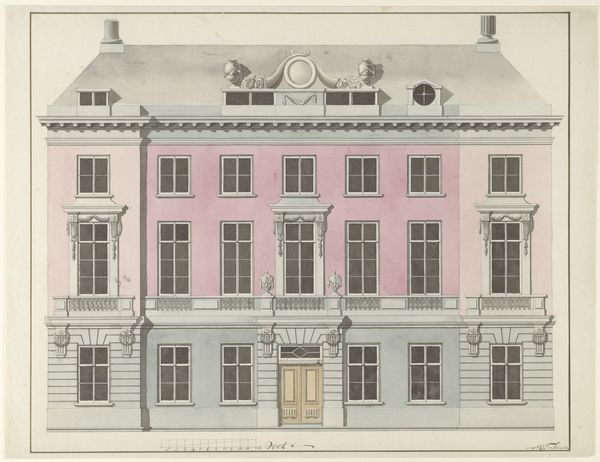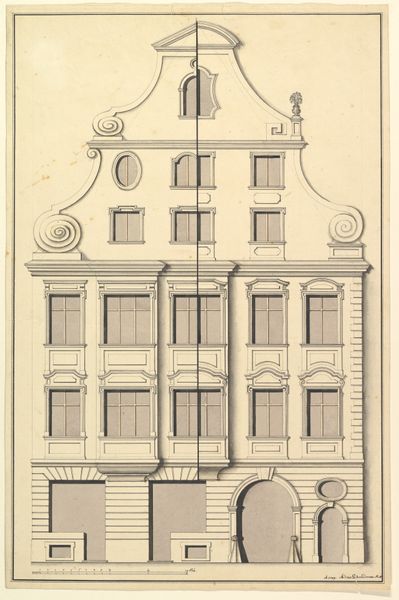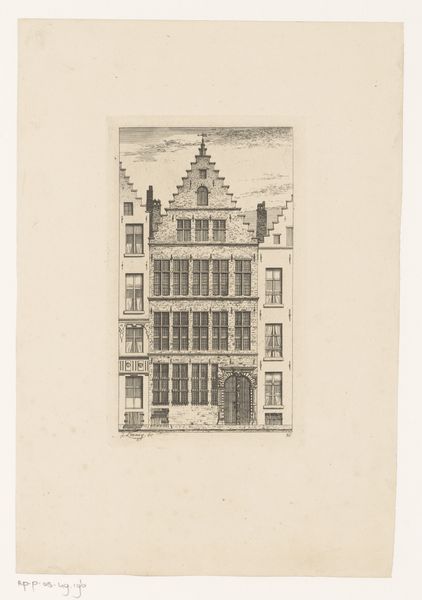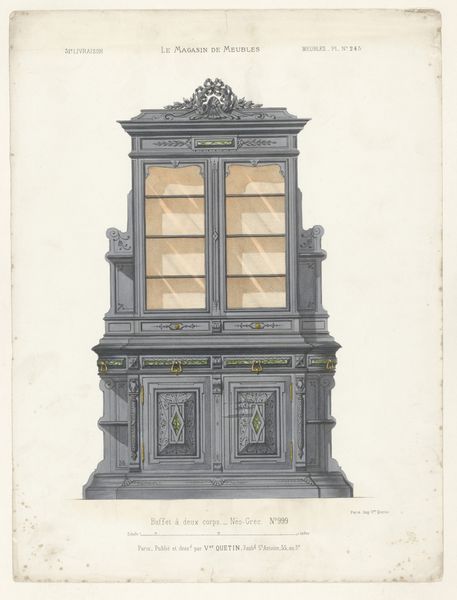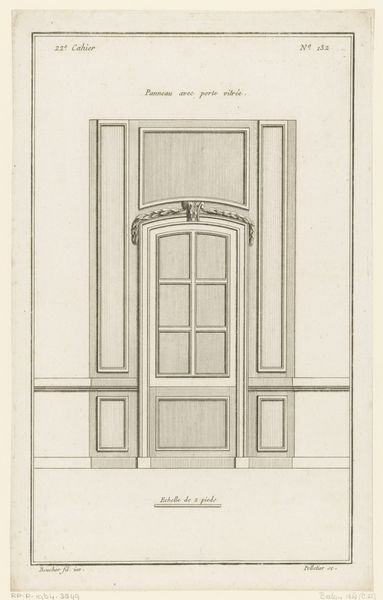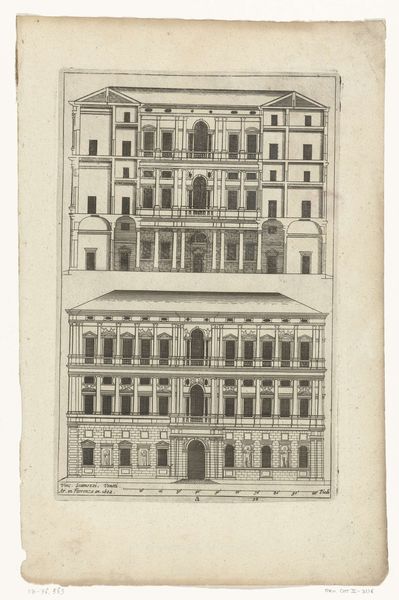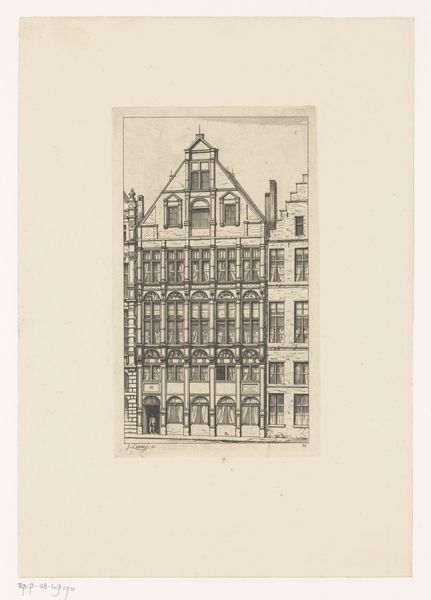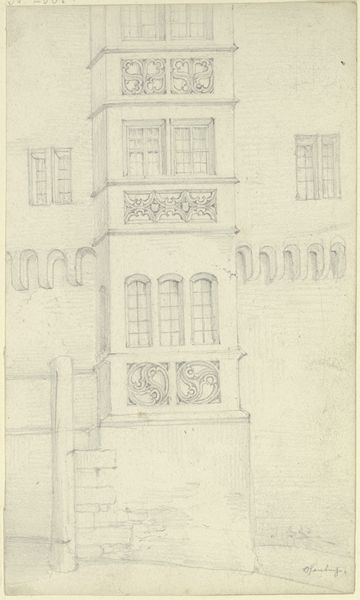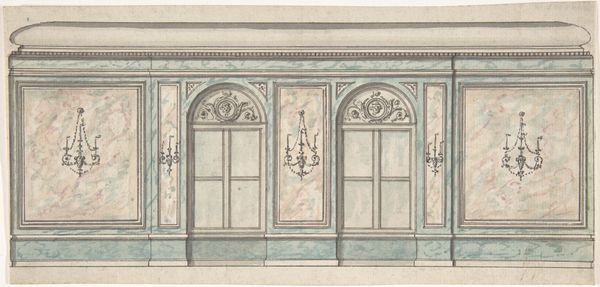
drawing, paper, ink, pencil, architecture
#
drawing
#
neoclacissism
#
paper
#
ink
#
pencil
#
architectural drawing
#
cityscape
#
architecture
#
building
Dimensions: height 349 mm, width 203 mm
Copyright: Rijks Museum: Open Domain
Curator: Well, hello there! What’s your first thought seeing this? It's titled "Gevel van het winkel van Thomas Tegg te Londen," or, "Facade of the shop of Thomas Tegg in London," dating from somewhere between 1824 and 1846. The artist? Unknown, but likely someone connected to Tegg’s business. We think the materials used here are pencil, ink, and watercolor on paper. Editor: Precise! Hmm... well, before all the historical details seep in, it looks like a stage set—almost Wes Anderson-esque with its symmetrical charm and muted tones. Like a beautifully designed dollhouse ready for tiny dramas to unfold. Curator: That’s interesting! I tend to view it in terms of London’s urban expansion during that period. Thomas Tegg was a successful publisher and bookseller, and this drawing gives us insight into the visual identity businesses adopted to appeal to a growing consumer culture. Editor: Sure, it's commerce meets art. But the rendering is so delicate. I keep imagining Mr. Tegg inside, meticulously arranging his books as if directing his own little play. The whole building feels like an elaborate advertisement, not just for books but for a certain lifestyle. Do you think the neo-classicism chosen for the building evokes a specific political sentiment or class identity? Curator: Definitely. Neoclassicism signaled stability and refinement, something highly valued by the emerging middle class. Buildings like these helped to visually solidify their status and cultural aspirations. Also, consider the prominent placement near the Mansion House, the Lord Mayor’s official residence, suggesting a deliberate positioning within London’s power structures. Editor: Ah, the subtle art of placement! It’s as if Tegg's shop is whispering, "We’re here to stay." Which makes me think, this drawing is an advertisement *of* an advertisement... Curator: Precisely. It shows how architectural drawings also functioned as marketing tools, promising stability and a sophisticated literary experience. Editor: Makes you wonder what literary adventures and societal transformations those walls have witnessed. I’m just imagining those book-filled shelves teeming with secrets… Curator: Indeed. From a historian's point of view, the work gives insight to commercial life in this period of history, from the books that may have been sold in it, to architectural styles. Editor: And for an artist like myself, it's about appreciating the harmony of history and visual design. Each line tells a story that extends beyond the facade.
Comments
No comments
Be the first to comment and join the conversation on the ultimate creative platform.
